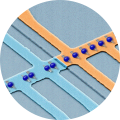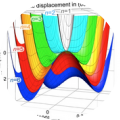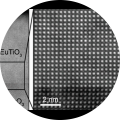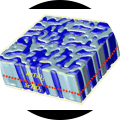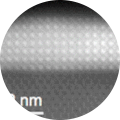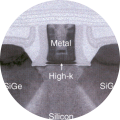Research Interests
Research Areas
Using strain to alter the properties of ferromagnets and antiferromagnets
Using strain and dimensionality to access hidden ground states and create tunable dielectrics with unprecedented performance
Using epitaxial engineering (strain, epitaxial stabilization, polarization doping, dimensionality control, and interface engineering) to create new multiferroics with enhanced properties
Many materials that are difficult to synthesize direclty as high quality single crystals can be made (via epitaxy) by depositing the desired composition on high quality single crystalline substrates with a similar structure
Integrating the unique functionalities of oxides with traditional semiconductors is key for making new devices for emerging technologies
The replacement of SiO2 as the gate dielectric of modern transistors with a material with a higher dielectric constant (HfO2) was a major milestone for oxide electronics. It has enable Moore's Law and with it the continued growth of the semiconducotr industry (now over $400 billion in annual sales) to continue.












